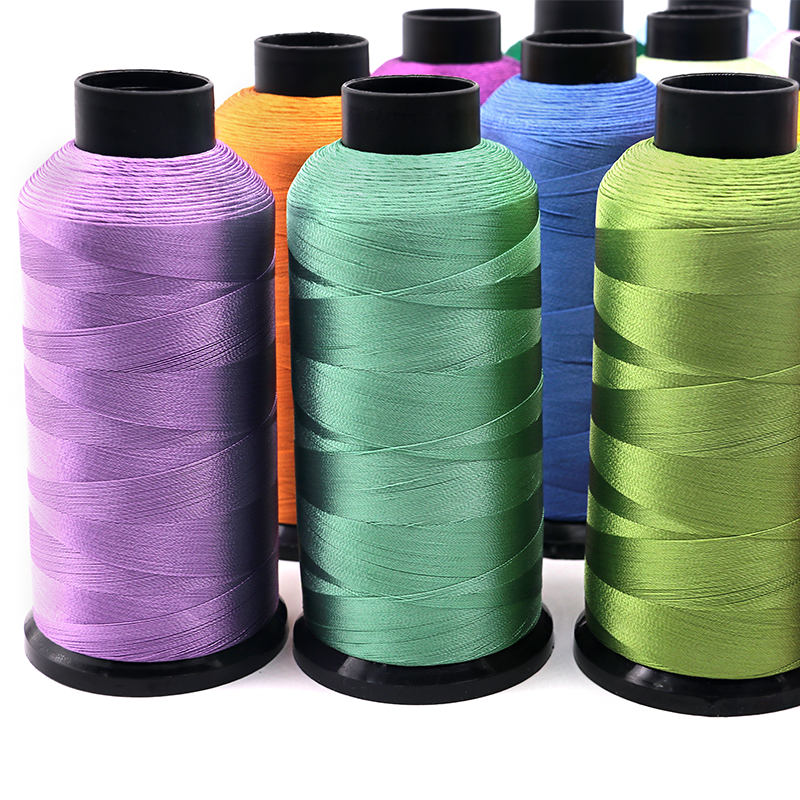Understanding the Critical Role of Thread Selection in Embroidery Quality
The art of embroidery has captivated craftspeople for centuries, with the quality of finished work heavily dependent on one crucial element: embroidery thread. The type, weight, and composition of embroidery thread dramatically influence how each stitch appears, ultimately determining the overall aesthetic appeal and professional finish of any embroidered piece. Whether creating intricate floral designs or bold geometric patterns, the thread choice becomes the foundation of stitch definition success.
Professional embroiderers and hobbyists alike understand that achieving crisp, well-defined stitches requires more than just skilled hands and proper technique. The embroidery thread itself plays a pivotal role in how stitches form, lay, and maintain their shape. From lustrous silk threads to sturdy cotton varieties, each type of embroidery thread brings unique characteristics that directly affect stitch definition.
The Physical Properties of Embroidery Thread
Thread Composition and Fiber Content
The material makeup of embroidery thread significantly influences how it performs during stitching. Cotton threads offer excellent control and create clean, matte stitches perfect for traditional embroidery. Polyester threads provide strength and color fastness, making them ideal for items requiring frequent washing. Rayon threads deliver a beautiful sheen but require more careful handling to maintain stitch definition.
Natural fibers like silk produce luxurious results with incomparable shine and smoothness, though they demand greater expertise in tension control. Metallic threads add sparkle but can be challenging to work with as their structure affects stitch formation differently than standard threads.
Thread Weight and Thickness
The weight of embroidery thread directly correlates to stitch definition clarity. Heavier threads create bold, prominent stitches that stand out against the fabric, while lighter weights allow for more delicate, detailed work. Understanding thread weight numbers helps in selecting the appropriate thickness for specific design requirements and desired stitch appearance.
When working with different thread weights, adjusting tension becomes crucial. Heavier threads require looser tension to prevent fabric puckering, while finer threads need precisely controlled tension to maintain neat, even stitches.
Thread Construction's Impact on Stitch Formation
Twist and Ply Configuration
The way embroidery thread is constructed through twisting and plying affects its performance and the resulting stitch definition. Tightly twisted threads create more defined, precise stitches but may be less smooth to work with. Loosely twisted threads offer a softer appearance but might split more easily during stitching.
Multi-ply threads provide better coverage and more dimensional stitches compared to single-ply options. The number of plies in embroidery thread influences how light reflects off the stitches, affecting their visual definition and overall appearance.
Surface Finish and Treatment
Modern embroidery threads often feature special surface treatments that enhance their performance. Mercerized cotton threads undergo a chemical process that increases shine and improves dye absorption, resulting in better stitch definition. Specialty coatings can reduce friction during stitching, leading to more consistent stitch formation.
These surface treatments also affect how threads interact with different fabric types, potentially improving or hindering stitch definition depending on the combination used.
Environmental Factors and Thread Performance
Temperature and Humidity Effects
Environmental conditions significantly impact how embroidery thread behaves during stitching. High humidity can cause certain threads to swell or become limp, affecting tension control and stitch definition. Temperature fluctuations may alter thread properties, particularly in synthetic fibers, leading to inconsistent stitch appearance.
Proper storage of embroidery thread in controlled conditions helps maintain its optimal properties for achieving precise stitch definition. Climate-controlled workspaces contribute to more consistent results across different projects.
Light Exposure and Color Stability
The way embroidery thread maintains its color and structure under various lighting conditions affects long-term stitch definition. UV-resistant threads retain their appearance better, ensuring that intricate stitch work remains visible and well-defined over time. Color stability becomes particularly important for pieces that will be displayed or frequently exposed to sunlight.
Different thread types exhibit varying levels of color fastness, which can impact how well stitch definition remains visible as the thread ages or faces environmental challenges.
Practical Considerations for Optimal Stitch Definition
Thread and Fabric Compatibility
Selecting the right embroidery thread for specific fabric types greatly influences stitch definition quality. Delicate fabrics require finer threads to prevent damage and maintain proper stitch formation. Heavier fabrics can support thicker threads that create more pronounced stitches without distorting the material.
Understanding how different thread types interact with various fabric weights and weaves helps achieve optimal stitch definition. This knowledge enables embroiderers to make informed choices that enhance their work's professional appearance.
Tension Management Techniques
Proper tension control is essential for achieving clear stitch definition with any embroidery thread. Different thread types require specific tension adjustments to create well-formed stitches. Maintaining consistent tension throughout the project ensures uniform stitch appearance and definition.
Advanced tension management techniques may be necessary when working with specialty threads or combining different thread types within the same design. These skills develop with experience and understanding of how various threads respond to tension adjustments.
Frequently Asked Questions
How Does Thread Thickness Affect Embroidery Detail Work?
Thread thickness directly influences the level of detail possible in embroidery work. Thinner threads allow for more intricate designs and finer details, while thicker threads are better suited for bold, simple designs and filling larger areas. The key is matching thread thickness to the design complexity and desired outcome.
What Makes Some Threads Better for Machine Embroidery?
Threads specifically designed for machine embroidery typically feature stronger construction, consistent thickness, and special lubricating treatments. These characteristics help prevent thread breakage, ensure smooth feeding through the machine, and maintain even tension for superior stitch definition.
Why Do Some Threads Create Shinier Stitches Than Others?
The shine factor in embroidery stitches comes from both the thread material and its construction. Rayon and silk threads naturally produce shinier stitches due to their fiber structure, while mercerized cotton offers a moderate sheen. The thread's twist level and surface treatment also affect light reflection and perceived shininess.

